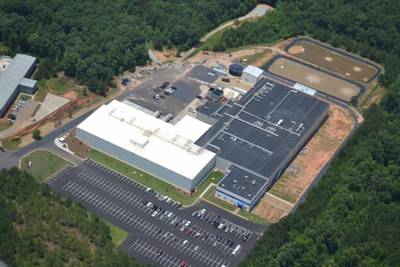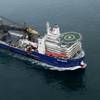Trident Seafoods has opened a $40 million production and distribution center in Carrollton, Ga., providing 175 full-time jobs and the capacity to produce 50,000 tons of finished products annually for the U.S. market.
"We are excited to add Trident to our family of customers, especially within the valuable refrigerated cargo market," said Georgia Ports Authority Executive Director Curtis Foltz. "This is an important win for Georgia, and for the Port of Savannah."
Savannah's Garden City Terminal offers 84 refrigerated container racks and 814 chassis plug-ins, powering 2,830 refrigerated boxes at a time. Another 20 racks should be complete by the end of the year, adding 480 refrigerated container slots.
"Savannah's refrigerated cargo infrastructure is unmatched on the U.S. East Coast, and is an important asset as Georgia seeks to lure more business in the area of food production," Foltz said.
Founded in 1973 by Chuck Bundrant with two fishermen partners and a single vessel, the family-owned Trident Seafoods is now North America's largest vertically integrated seafood harvesting and processing company.
The Seattle-based company's Carrollton site is 7 miles from I-20, 30 miles from I-85, and approximately 50 miles east of Atlanta.
Company officials said the state-of-the-art production plant and distribution center has been engineered to meet the needs of Trident customers on the Eastern seaboard. The new facility will streamline the production process for a growing number of breaded and battered seafood items, and offer significant logistical advantages for major regional markets.
While Trident customers include major Eastern retailers, club stores, restaurant chains and foodservice distributors, until recently the company's brick-and-mortar presence extended only as far east as Motley, Minn.
"Trident's decision to choose Georgia for its East Coast operation is a strong endorsement, not only for our deepwater ports, but for the economic development and targeted job training assistance our state provides," said GPA Board Chairman James Walters. "All of these assets are working in coordination to bring jobs and opportunity home to Georgia."
With assistance from the Georgia Department of Economic Development and Carroll Tomorrow, Trident acquired the land necessary to expand and repurpose an existing food processing facility, and got local workforce training in food safety and seafood processing skills.
"Purchasing, modernizing and expanding the existing processing plant in Carrollton to accommodate our needs was a good fit for us, and we have faith that it will be a good fit for Carrollton," Trident CEO Joe Bundrant said. "We want to grow our business in the Eastern U.S. and Carrollton is situated close to our customers. The site offered us the additional space we needed to build a modern cold storage and distribution center. And your transportation infrastructure allows us to source raw materials and to deliver our finished products to important markets in a timely fashion."
The new plant sits on approximately 81 acres and includes an 88,000 square-foot manufacturing floor overlooked by 18,000 square feet of office space and another 20,000 square feet of support area.
In addition to the production and research and development facilities, the plant includes a distribution center with 67,000 square feet of cold storage space to keep finished products at 0° F until shipment. A total of 15 truck bays will facilitate the offloading of raw materials and the shipment of finished, frozen products. A special feature of the modern truck bays will be sealed climate-controlled areas where trucks can open their doors and load finished goods without dumping the air in their pre-chilled compartments. Once the plant is fully operational, it is expected to employ 175 workers from the greater Carrollton area.
As the plant ramps up to full capacity, Trident expects to produce a full line of portion-controlled seafood products cut from pollock, cod, salmon, halibut, tilapia, sole and mahi mahi, as well as an array of non-seafood appetizers.
Many of the finished products will be breaded, battered, glazed and fryer- or oven-ready. The on-site R&D center will allow a staff of culinary experts and food technologists to keep pace with consumer demands.














